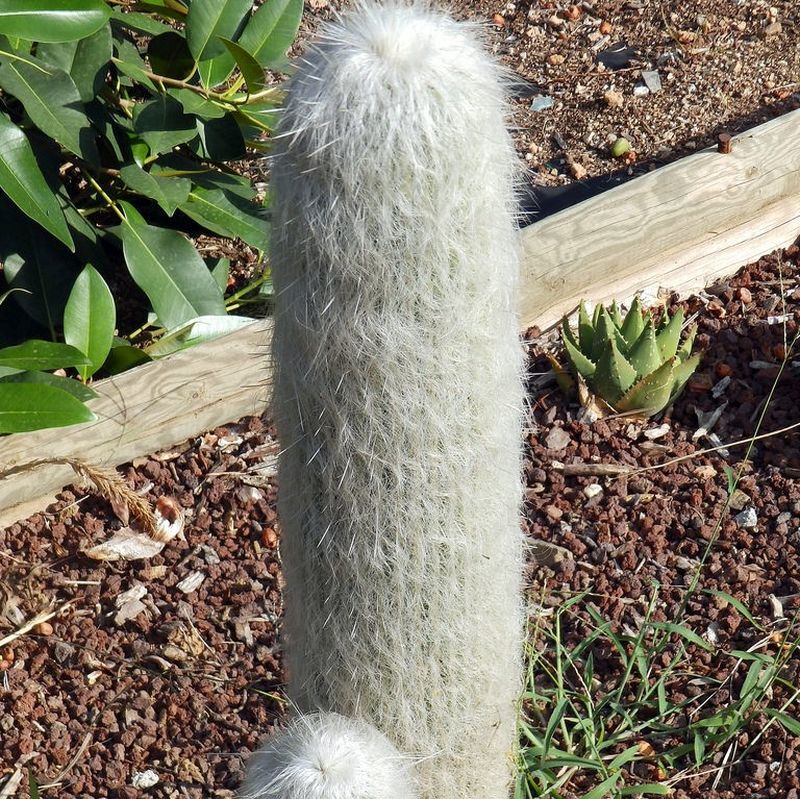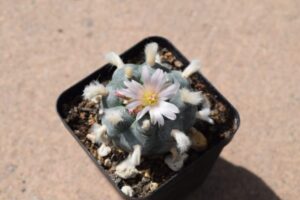The Old Man Cactus, scientifically known as Cephalocereus senilis, is a fascinating succulent species renowned for its distinctive appearance and enigmatic flowering habits. Often featured in cactus collections and thought to hold a certain allure as a houseplant, this intriguing species unveils a rare beauty when it blooms. The juxtaposition of its striking white hairs against the vibrant colors of its flower creates a visual spectacle that captivates enthusiasts and passersby alike.
Distinguished by its tall, columnar stature, the Old Man Cactus is typically adorned with curly, white, woolly spines. These spines not only serve as a protective barrier but also lend the plant a unique charm, resembling the appearance of an elderly man’s beard. Beyond this captivating aesthetic, the flowering process reveals a hidden gem—an experience that few get to witness, given the conditions required for the plant to bloom.
Understanding the flowering cycle of the Old Man Cactus begins with an appreciation of its natural habitat. Native to the arid regions of Mexico, this cactus thrives in environments where the sun washes over the landscape. The right conditions—adequate sunlight, suitable temperature ranges, and appropriate watering—are critical for its growth and subsequent flowering. When these elements converge, the transformation into a flowering state can occur, a moment filled with anticipation for those who cultivate this botanical wonder.
While the Old Man Cactus is majestic in its non-flowering state, the blooms it produces are a spectacle that unleashes a burst of vibrancy. Each flower emerges from the crown of the cactus, resembling a delicate, resplendent funnel. Flowers usually appear in late spring to early summer, requiring the cactus to reach maturity, often around 50 years, before embarking on this transformative journey.
The blooms manifest in striking shades of white to pale yellow, often with delicate hints of pink near the edges. They emit a sweet, subtle fragrance that attracts pollinators, such as bees and hummingbirds, essential for reproduction. This attraction reinforces the crucial relationship between cacti and their ecosystem. However, the elegance of the bloom is not only its color but the ephemeral nature of its beauty—each blossom only lasts for a day or two, creating an urgency among collectors and observers alike to witness it in person.
In essence, the flower of the Old Man Cactus serves as a testament to the resilience of life in arid climates. The rarity of the flowering event engenders a sense of intrigue and appreciation among enthusiasts, highlighting not just the aesthetics of the plant but also its intricate relationship with the environment. Cultivating an Old Man Cactus requires patience and dedication, but the eventual reward—an isolated bloom—is unparalleled in the realm of succulent gardening.
Incorporating this remarkable species into an indoor or outdoor landscape delivers not only visual intrigue but unparalleled texture. The juxtaposition of the fuzzy white spines and the smooth, vibrant petals of the flower creates a contrast that is both striking and thought-provoking. This complex interplay of shapes and colors underscores the aesthetic appeal of the Old Man Cactus, making it a coveted specimen for collectors and decorators alike.
Caring for the Old Man Cactus extends beyond mere aesthetics, inviting enthusiasts into the intricate world of succulent ecology. Understanding its needs—well-draining soil, moderate watering, and ample sunlight—is essential for nurturing not just a plant, but a living piece of art. Over time, as the Old Man Cactus matures, it invites contemplation about the passage of time, resilience, and the quiet beauty that can often be overlooked in the hustle of life.
For those fortunate enough to witness the flowering of an Old Man Cactus, the experience transcends horticultural duties and enters the realm of art and nature. Each flower, although fleeting, encapsulates the essence of beauty—delicate yet striking, transient yet profound. This duality beckons nature lovers, providing a timeless reminder of the intricate dance between fragility and endurance.
Ultimately, the allure of the Old Man Cactus flower is not merely in the physical representation—a vibrant burst of color atop a gray, fuzzy column—but also in the layers of intrigue it offers. From its slow-growing nature to the rarity of its blooms, this plant challenges preconceived notions about beauty and the patience required to cultivate it. By understanding both the plant’s structure and flowering principles, enthusiasts can appreciate not only the rarity of witnessing this floral display but also the underlying beauty that defines the Old Man Cactus as a botanical marvel.





Leave a Comment